Alignment of Organizational Values
- According to Dunn (2002), employee satisfaction relies on:
- Their attitudes;
- Level of satisfaction with their work;
- The work environment.
- It is thus essential for an organization as well as nurses to ensure that their values are aligned.
- This will ensure that the overall goals and the objectives of the nursing practice are met.
- Common organization values include in the nursing practice include:
- Striving to meet the needs and requirements of patients.
- Treating and curing patients.
- Embracing a strong organizational culture.
- Expressing passion and emotion in the nursing practice.
- Following the principles and ethics of the nursing practice (Certo, 2002).
- To achieve organizational goals, most healthcare facilities try to ensure that nurses feel as part of the organization by:
- Having Effective leadership mechanisms;
- Embracing teamwork among nurses;
- Enhancing their skills and experience through training and education.
- As a result, nurses are motivated to:
- Help and heal patients.
- Have passion in their work.
- Treat fellow employees with respect.
- Becoming advocates of their profession.
- Value the well being of their patients.
These factors are essential since they determine the performance and the level of motivation that employees will work. In a healthcare setting therefore, the management should ensure that employees are satisfied so that they can perform their duties as per the expected standards.
It is a common to find that the organization and the management have similar values. In such an instance, the health facility is expected to operate in an effective and efficient manner hence realizing its vision, mission, goals and objectives (McShane, 2003).
The organization structure of a healthcare facility plays a critical role in determining the level of satisfaction of its workforce. Effective leadership is an essential component that needs to be consider to realize this goal. Through effective leadership, effective mechanisms will be put in place to align the values of the organization and its employees.
To further increase efficiency, the management of many organizations have adopted the concept of teamwork to ensure that its workforce have shared values (Luft, 2004). At the same time, this association will act as a platform where employees will share their skills and expertise hence improving their overall performance.
Motivation increases the overall performance of nurses. As a result, the patients will receive high quality services.
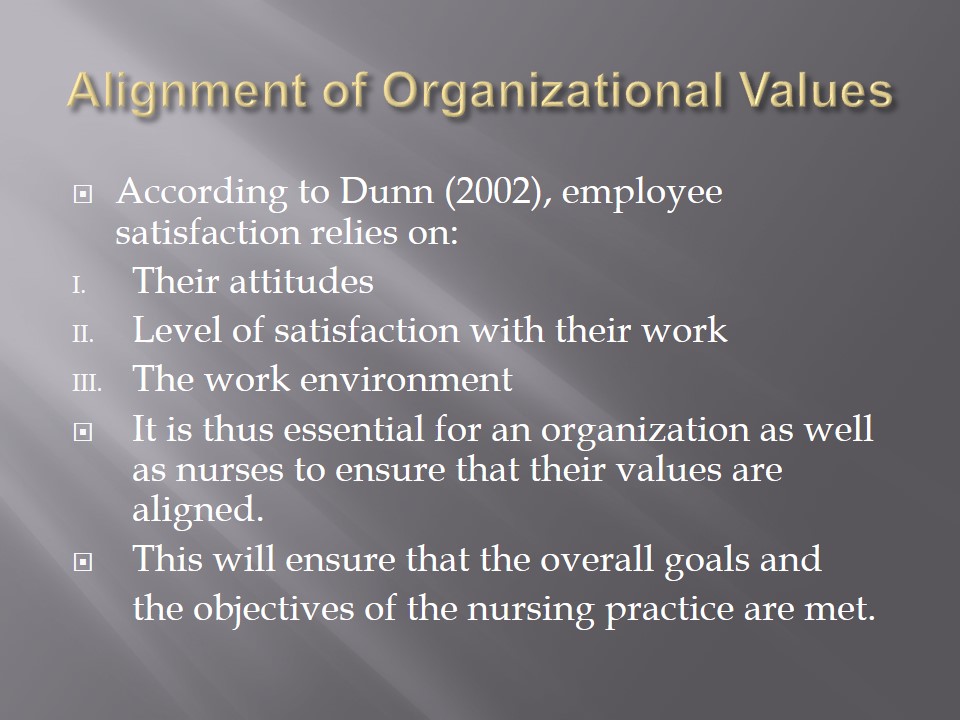
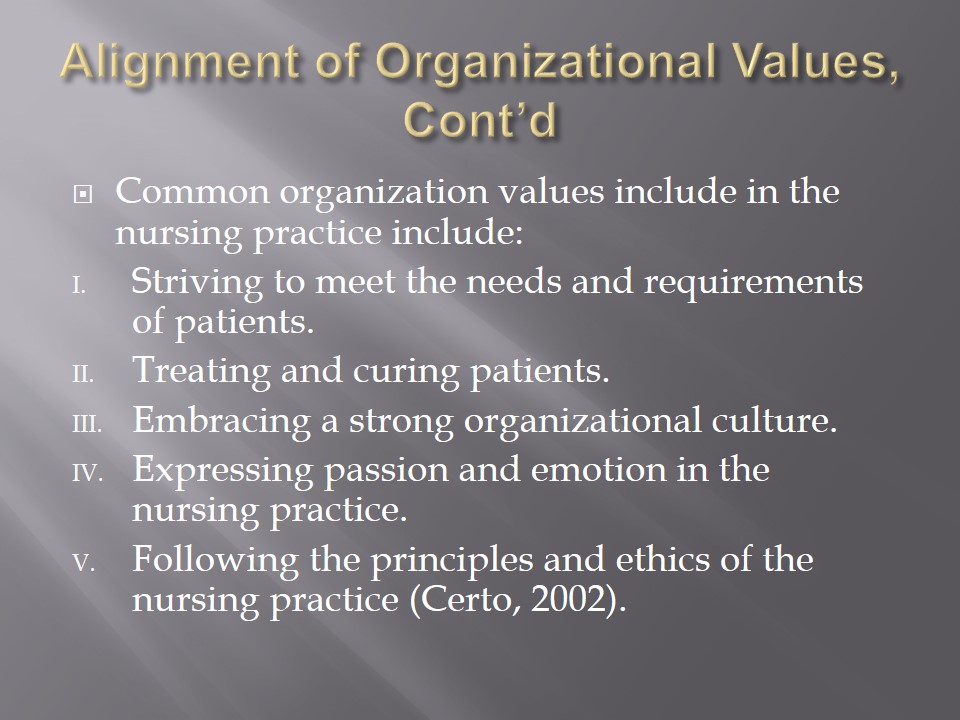
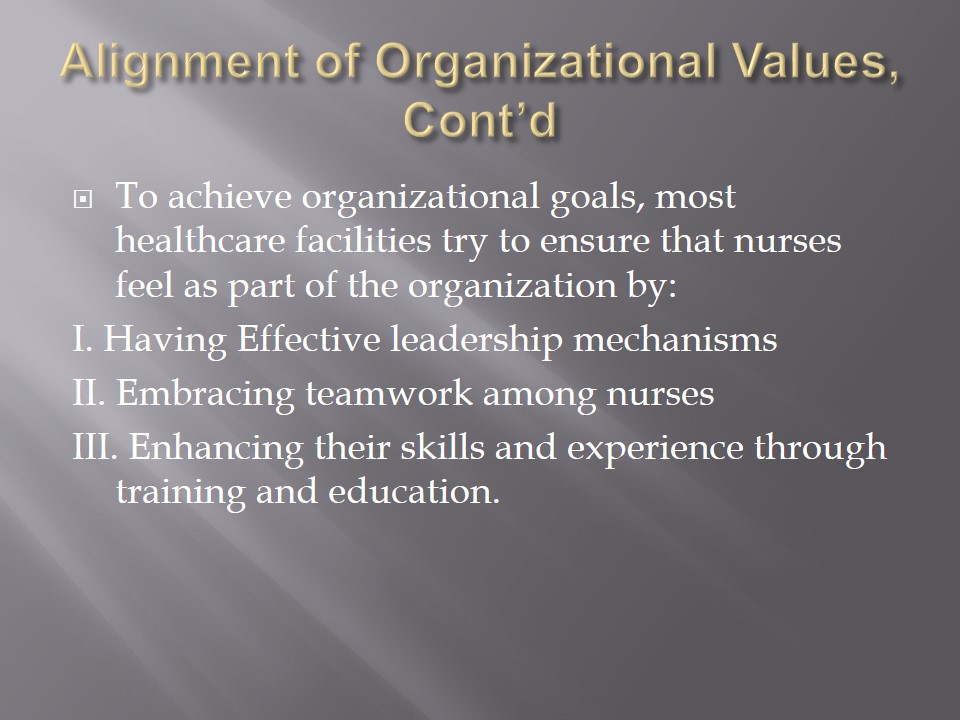
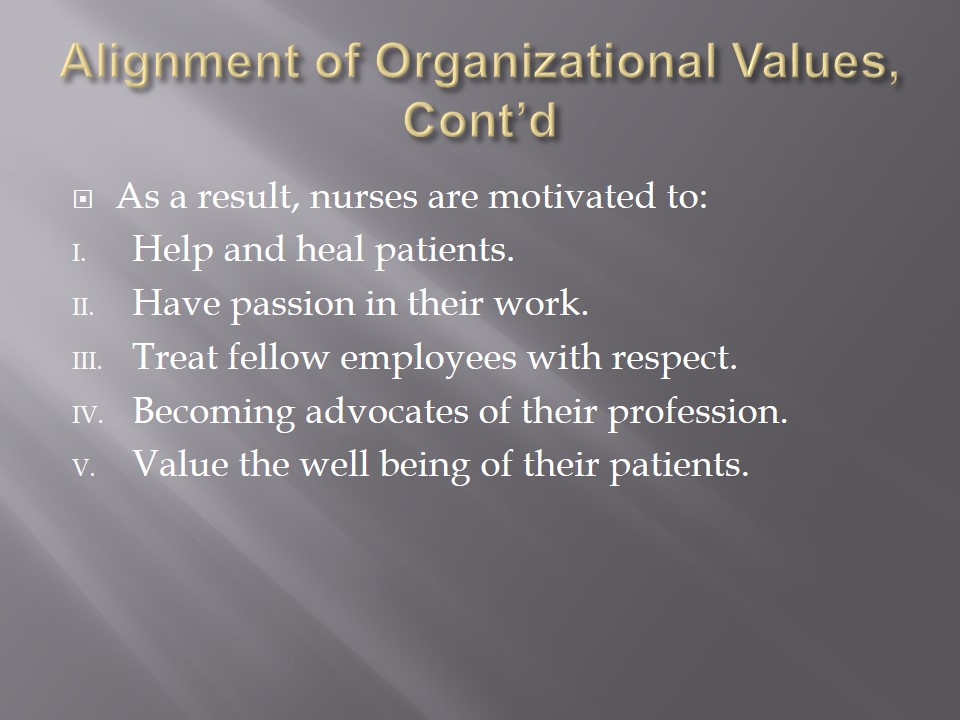
Effective Communication
- In a workplace, communication is important since it facilitates the transmission of information, hence enabling a nurse to be understood by other employees (Edgley, 2001).
- In the process, one receives a positive feedback that can either be:
- Descriptive;
- Evaluative;
- Prescriptive;
- Individual;
- Group.
- Communication can either be verbal or non-verbal.
- However, there are factors that might act as barriers to communication. They include:
- Environmental barriers that arise from competition for attention, multiple levels of hierarchy, power, and organization complexity.
- Personal barriers that arise from beliefs, values, prejudices, jealousy, and selective attention.
- The following steps can be used to overcome environmental barriers:
- Reduction in the levels of hierarchy in an organization.
- Change in organizational culture to encourage free flow of information.
- Placing more emphasis on attention and listening.
- The following steps can be used to overcome personal barriers:
- Respect of other people’s values and beliefs.
- Empathy.
- Recognition and appreciating the fact that other people might be jealous and selective perception.
Communication ensures that the right information is conveyed in order to receive a desired outcome. In a nursing environment, communication between the nurses and the management, among the nurses, and between the nurses and their patients is essential.
Verbal communication uses spoken or written words to convey information (Guo, 2005).
Non-verbal communication uses encoded messages to convey information (Guo, 2005).
Several measures can be used to overcome environmental barriers. These measures aim at building a bridge between an individual and the people who are surrounding them.
These strategies aim at changing the attitude that an individual might have towards other people.
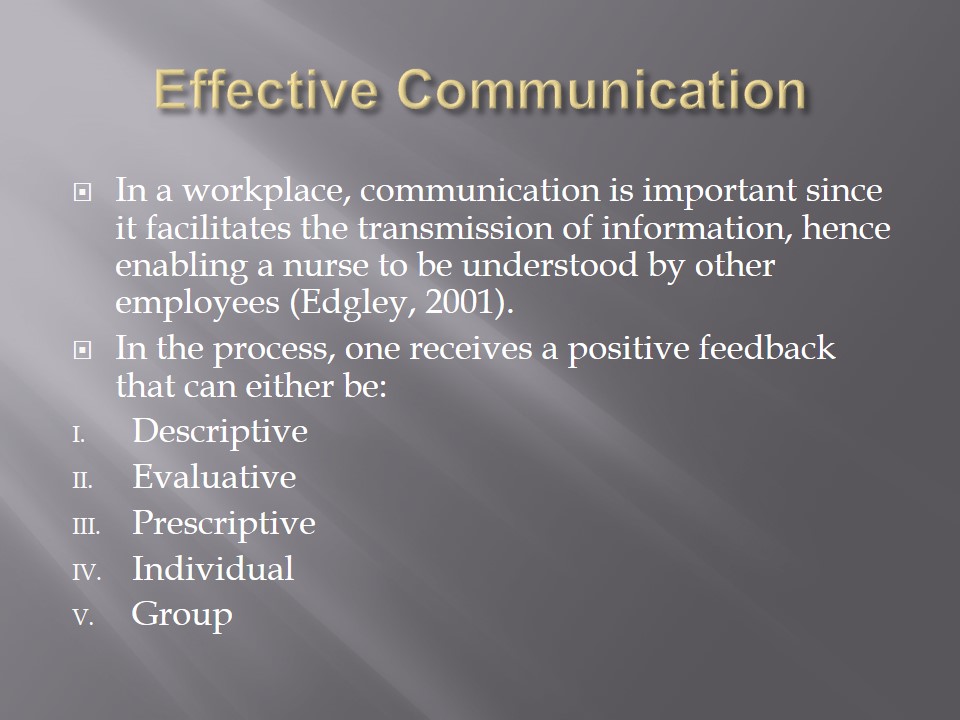
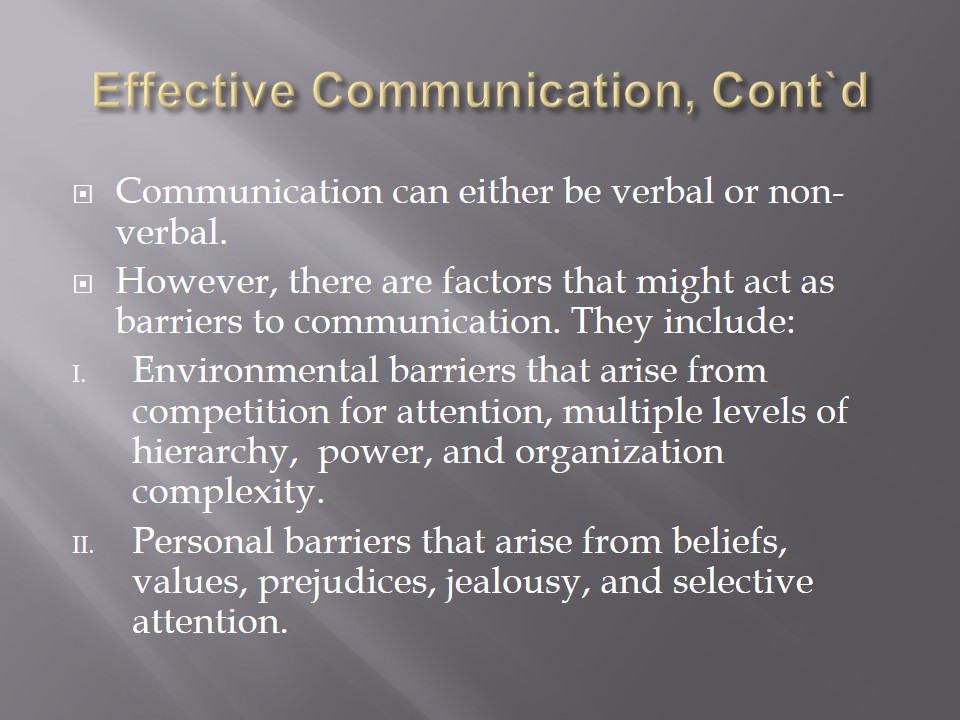
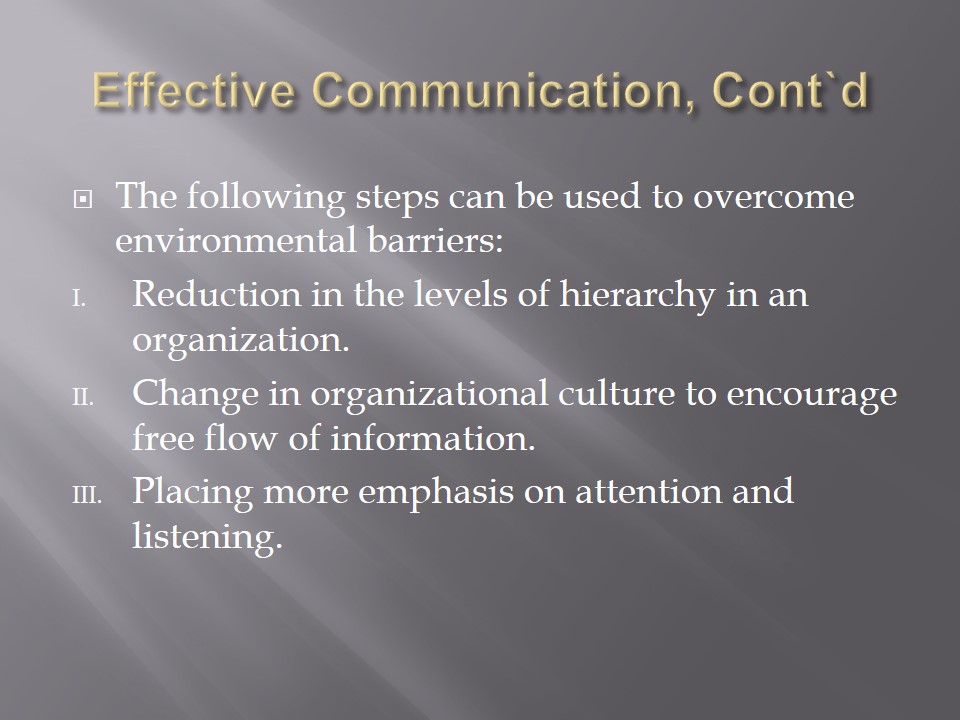
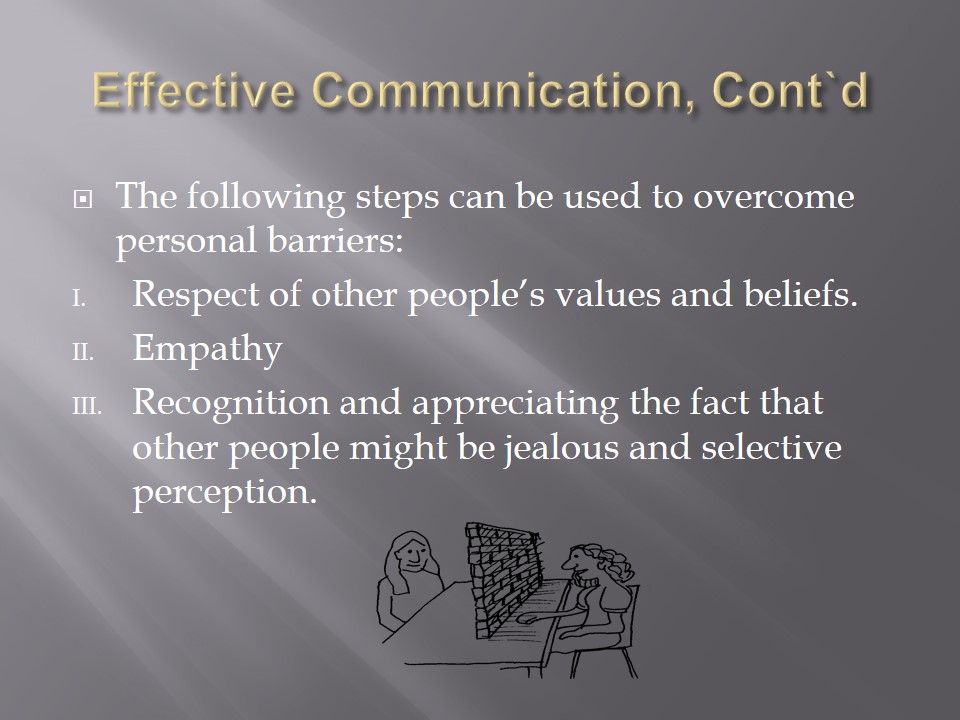
Personal Experience
- The organization I was working as an intern had many values.
- However, the following values brought about conflict between the management and myself:
- The centralized organization culture that strived for excellence.
- Striving to meet the needs and requirements of the patients.
- Due to the emphasis of the management on these values and the limited number of nurses the health facility had, I developed a negative attitude towards my work.
- This affected my performance and my level of job satisfaction.
- The patients therefore did no receive the quality of services that they expected.
- This led to a lot of complaints, especially to the management.
The organization that I was working for had a centralized form of leadership. Therefore decisions were made at the managerial levels without considering the impacts that they will have at the lower levels of management and on the patients.
Due to poor leadership and the differences in values between the management and other nurses including myself, the health facility failed at meeting the needs of the patients.
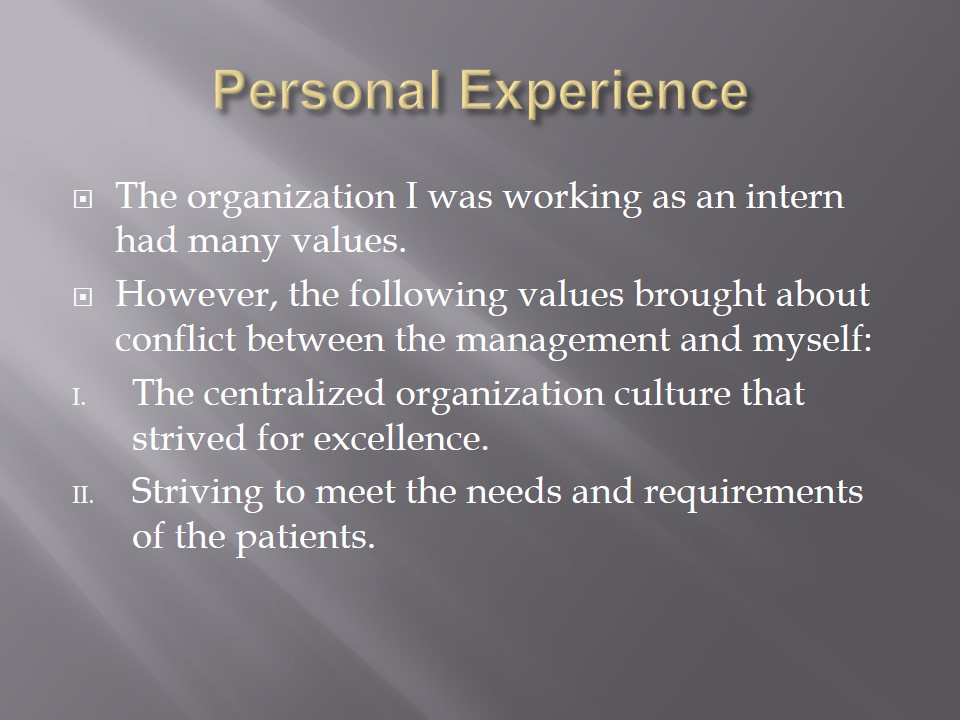
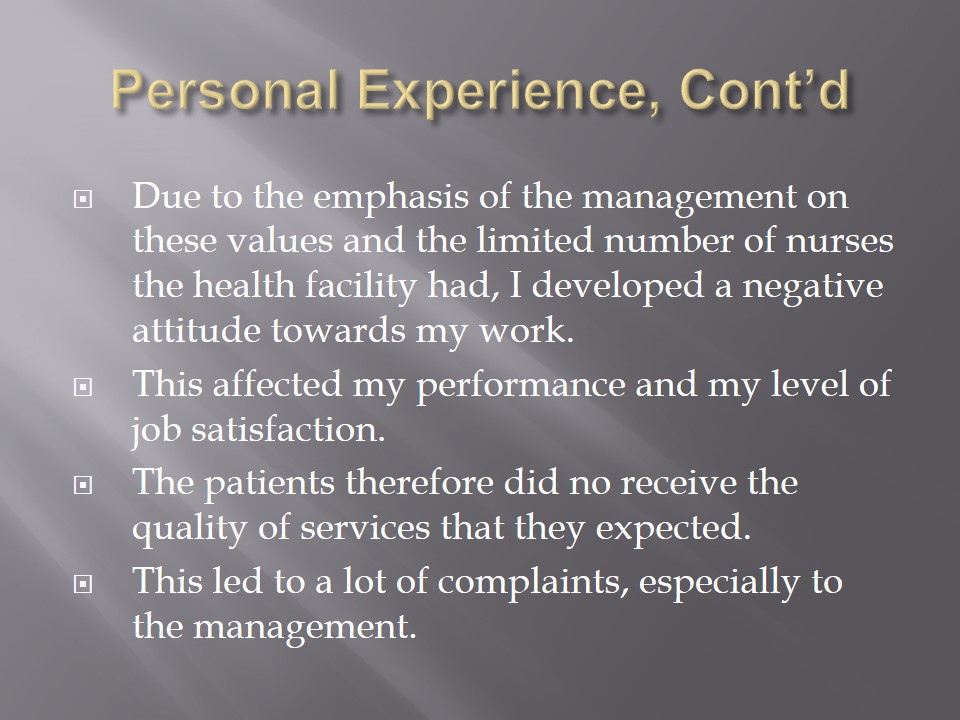
References
Certo, S. C. (2002). Modern Management: Quality, Ethics, and the Global Environment. Boston: Allyn and Bacon.
Dunn, R. (2002). Haimann’s Healthcare Management. Chicago: Health Administration Press.
Edgley, G. (2001). The Dialogue Process. Association Management, 43(10), 37–40.
Guo, K. (2005). Workplace Communication. London: Sage.
Luft, J. (2004). Group Processes: An Introduction to Group Dynamics. Palo Alto: Mayfield.
McShane, S. L., (2003). Organizational behavior: Emerging realities for the workplace revolution. Boston: McGraw-Hill.